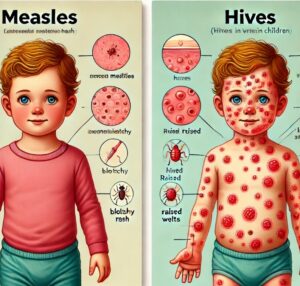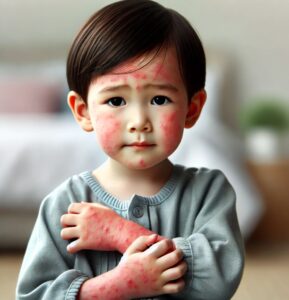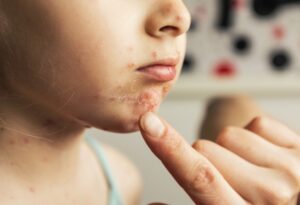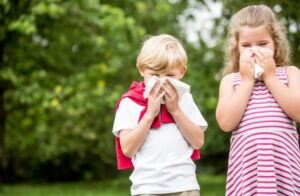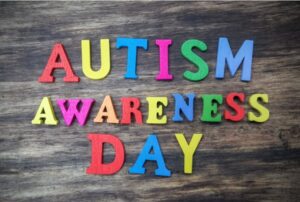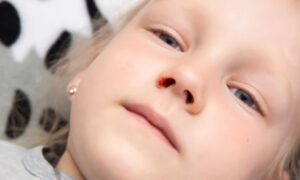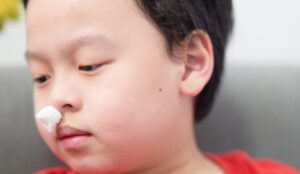Chickenpox is a common contagious disease in children, typically occurring in kids aged 5-10. While it is usually a self-limiting disease, meaning it resolves on its own, it can cause complications in infants and children with weakened immune systems. Therefore, understanding the symptoms, transmission, and prevention of chickenpox is crucial for parents to help protect their children’s health.
What Is Chickenpox in Children?
Chickenpox (also known as varicella) is a highly contagious disease caused by the varicella-zoster virus (VZV). It spreads through respiratory droplets or direct contact with fluid from the blisters. Chickenpox is more common in children, particularly those who haven’t been vaccinated. While it mostly affects kids, adults can also contract the disease, often with more severe symptoms.
What Are the Symptoms of Chickenpox?
Symptoms of chickenpox usually appear 10-21 days after exposure to the virus. At first, children may experience mild flu-like symptoms such as fever, fatigue, headache, and loss of appetite. The most distinctive symptom of chickenpox, however, is a rash that follows this initial stage.
The rash typically progresses in the following stages:
- Red spots: Small red spots appear, often starting on the face, scalp, and trunk before spreading to the rest of the body.
- Papules: The red spots then form raised papules, accompanied by itching.
- Vesicles: The papules fill with fluid, becoming small, clear blisters.
- Crusting: The blisters eventually burst, form scabs, and heal.
These rashes tend to appear in waves, meaning that at any given time, a child may have a mixture of red spots, blisters, and scabs. The itching can be intense, and if the skin is scratched, there is a risk of secondary bacterial infection.
Is Chickenpox Contagious?
Yes, chickenpox is highly contagious. The virus can spread through airborne droplets when an infected person coughs or sneezes, or through direct contact with the fluid from blisters. A child with chickenpox is contagious from 1-2 days before the rash appears until all the blisters have scabbed over, which usually takes about 7-10 days.
Children with chickenpox should avoid going to school or participating in group activities during this contagious period to prevent spreading the virus to others, especially to infants, pregnant women, or immunocompromised individuals.
What Are the Complications of Chickenpox?
While most children recover from chickenpox without complications, in some cases, the disease can lead to serious health issues. Common complications include:
- Skin infections: Scratching the blisters can lead to bacterial infections of the skin, such as impetigo.
- Pneumonia: The varicella virus can cause lung infections, particularly in immunocompromised children or adults.
- Encephalitis: Although rare, chickenpox can cause inflammation of the brain (encephalitis), leading to headaches, confusion, and seizures.
- Shingles: After recovering from chickenpox, the virus remains dormant in the body and can later reactivate as shingles, especially in people with weakened immune systems.
How to Prevent Chickenpox?
The most effective way to prevent chickenpox is through vaccination. Children usually receive their first dose of the chickenpox vaccine at 12-15 months of age and a second dose between 4-6 years old. The vaccine not only protects against chickenpox but also reduces the risk of severe complications.
Even if a vaccinated child contracts chickenpox, the symptoms are typically milder, with fewer blisters and a shorter illness duration. Vaccination also helps reduce the spread of chickenpox in the community.
In addition to vaccination, parents should take the following precautions:
- Isolate the child: If a child has chickenpox, they should stay away from others, particularly those who are vulnerable, until all blisters have crusted over.
- Avoid scratching: To minimize the risk of skin infections, parents should keep the child’s nails trimmed short and discourage scratching. Wearing loose clothing can also help reduce itching.
- Maintain good hygiene: Frequent handwashing, keeping the skin clean, and avoiding the sharing of personal items like towels can reduce the chance of spreading the virus.
Chickenpox is a common contagious disease in children, but it is typically mild and self-limiting. With proper care and preventive measures, most children recover without complications. However, vaccination remains the most effective method of prevention, significantly lowering the risk of infection and complications. By taking the right precautions and keeping an eye on symptoms, parents can help their children navigate through chickenpox safely.




